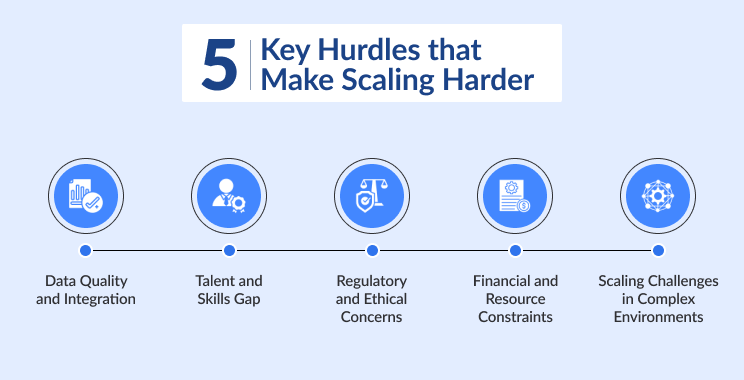The healthcare industry in the United States is facing a big problem in keeping enough workers to meet the growing need for patient care.
Reports from groups like the Missouri Hospital Association show that many healthcare workers, especially nurses, are leaving their jobs.
There is also a shortage of nursing teachers at schools, which makes it hard to train new healthcare workers.
Hospital managers and IT leaders need to understand these issues to plan for the future of healthcare.
According to the 2023 Workforce Report from the Missouri Hospital Association, nearly 20% of nurses leave their jobs each year.
Jobs in cleaning and food services in hospitals have turnover rates over 40%.
The COVID-19 pandemic made stress and burnout worse for workers.
In the last two years, about 97,000 nurses stopped working.
Almost 610,000 more nurses are expected to leave in the next five years.
By 2030, the U.S. will need 2.6 million more healthcare workers to keep up with patient care needs.
This shortage causes problems for hospitals.
Each 1% increase in nurse turnover costs hospitals about $380,600 a year.
To fix this, hospitals have raised wages and given bonuses.
But inflation has lowered the value of this extra money.
Pay raises alone are not enough to keep workers.
The Role of Academic Institutions in Workforce Development
Schools that train healthcare workers, especially nursing schools, play a key role in fixing the shortage.
In Missouri, more than 1,200 qualified nursing applicants were not accepted in 2021 because there weren’t enough teachers.
They need 64 more full-time nursing teachers just to teach all qualified students.
Without enough faculty, schools cannot offer enough clinical training or accept enough students.
Teachers also help students learn about important topics like social factors affecting health, health fairness, and racism in healthcare.
Learning these helps prepare nurses to care for patients from many backgrounds and help reduce health differences.
The Future of Nursing 2020–2030 report by the National Academy of Sciences, Engineering, and Medicine says schools need to:
- Fix shortages of nurses trained in public health and health fairness.
- Create policies based on diversity, fairness, inclusion, and well-being.
- Update courses to address modern healthcare problems, including social health factors.
- Build school cultures that attract and keep diverse students and teachers.
Hospitals and schools are trying new partnerships.
These let nursing students work as employees while training, giving them real experience and financial help.
Some hospitals pay back tuition and encourage nurses to become teachers to help with the faculty shortage.
Barriers Affecting Entry into Healthcare Education
Some problems outside of school stop people from entering healthcare programs.
High tuition fees, transportation troubles, and lack of childcare make it hard for many people to enroll.
This has caused a drop in student applications and enrollment, like at Missouri community colleges where numbers fell by half.
Also, stress and mental health worries from the COVID-19 pandemic make healthcare jobs less attractive.
Many people are afraid to enter jobs linked with emotional hardship and danger.
Fixing these problems needs help with money, flexible schedules, counseling, and safer workplaces.
Impact on Healthcare Organizations and Patient Care
Healthcare managers and clinic owners find that worker shortages make it hard to keep good patient care.
High turnover breaks the flow of patient care.
It adds more work for those left, which may affect safety.
This extra stress causes even more workers to leave.
There are more absences, lower productivity, and hospitals need costly temporary workers like travel nurses.
These issues raise costs and stretch resources, making it hard to meet patient needs well.
Workforce Retention Strategies in Healthcare Organizations
To fight these problems, healthcare places use many strategies.
Besides raising pay and offering bonuses, they use flexible scheduling.
Flexible hours help workers balance life and job, reduce burnout, and make work better.
They also focus on mental health support and violence prevention to make workplaces safer.
Recognition programs and clear paths for career growth help encourage workers to stay.
It is clear that keeping workers needs more than just money; a good work culture matters too.
Technology Solutions: Enhancing Workforce Efficiency through AI and Automation
One way to help with workforce problems is using AI and automation, especially in front-office and admin tasks.
Simbo AI is a company that offers AI phone answering services, cutting the workload for staff.
Front desks get many calls about appointments and hours.
Answering all these calls takes up a lot of staff time and stops them from doing clinical work.
Automated phone services handle routine calls, letting staff focus on patient care and answering calls more quickly.
Automation also helps reduce missed calls and no-shows, which makes clinics work better and patients happier.
This tech runs all day without getting tired or needing breaks.
AI tools like Simbo AI help by:
- Scheduling and reminding about appointments.
- Answering patient questions and directing calls.
- Letting staff focus on harder tasks.
- Handling multiple languages to help diverse patients.
Using AI fits with efforts to improve workflows, lower burnout, and use resources wisely.
By cutting admin tasks, healthcare workers can spend more time with patients, improving care and morale.
Academic-Clinical Partnerships and Technology Integration
Schools and healthcare groups are also teaming up to add technology to training.
Students who learn AI tools during school gain important digital skills needed for today’s clinical work.
Combining clinical training with technology helps prepare nurses and staff to work well in busy settings.
As nursing education includes digital learning and health data skills, new nurses will be ready to contribute from day one.
Teachers working in both schools and clinics can work with admin staff to bring AI tools and data into learning and hospital work.
Preparing for a Sustainable Healthcare Workforce Future
Fixing the shortage of nursing teachers and growing school capacity needs teamwork between schools, healthcare providers, government, and tech companies.
Programs like Missouri’s Fast Track Workforce Incentive Grant give money to students entering needed healthcare areas to help with costs.
There are also ways for nurses to become teachers to ease faculty shortages.
Hospitals support roles that combine clinical care with teaching to keep the workforce stable and teach more students.
Healthcare groups must also invest in workplace well-being, career development, and flexible schedules to keep staff.
Together with AI and automation, these steps will help keep healthcare workers and improve patient care.
Frequently Asked Questions
What are the current turnover rates among healthcare staff?
In Missouri, the 2023 Workforce Report indicates a nearly 20% turnover rate among staff nurses and a 40% turnover rate for environmental services and dietary workers, which remains significantly higher than pre-pandemic levels.
What impact did the COVID-19 pandemic have on healthcare workforce challenges?
The pandemic exacerbated existing structural challenges in the healthcare workforce, leading to increased burnout, stress, and turnover among staff, further complicating recruitment and retention efforts.
How many additional healthcare workers will be needed in the next eight years?
According to the U.S. Bureau of Labor Statistics, the healthcare delivery system will require 2.6 million more workers nationally within the next eight years to meet increasing demand.
What strategies are hospitals using to retain staff?
Hospitals are increasing starting wages, offering sign-on and retention bonuses, and enhancing workplace flexibility to combat turnover and retain staff.
How does turnover affect healthcare organizations financially?
Each percentage change in nurse turnover can cost an average hospital approximately $380,600 annually, leading to significant operational and financial disruptions.
What are some barriers to entering healthcare careers?
Barriers include financial burdens like tuition costs, lack of transportation and childcare, and limited access to necessary clinical training opportunities.
What role do academic institutions play in workforce retention?
Academic institutions face challenges such as faculty shortages and inadequate clinical rotation spaces, affecting their ability to produce new healthcare professionals.
How are hospitals addressing the nursing faculty shortage?
Hospitals are exploring partnerships and creative faculty models, such as providing tuition reimbursement and encouraging nurses to take on dual roles as faculty.
What innovative approaches are being implemented for workforce development?
Innovative approaches include the academic-clinical partnership model, where nursing students work as employees while completing their clinical requirements.
What are effective retention strategies for healthcare workers?
Effective retention strategies include promoting work-life balance, offering career advancement opportunities, addressing employee well-being, and encouraging open communication within the organization.
The post Understanding the Role of Academic Institutions in Developing the Future Healthcare Workforce Amid Faculty Shortages first appeared on Simbo AI – Blogs.






